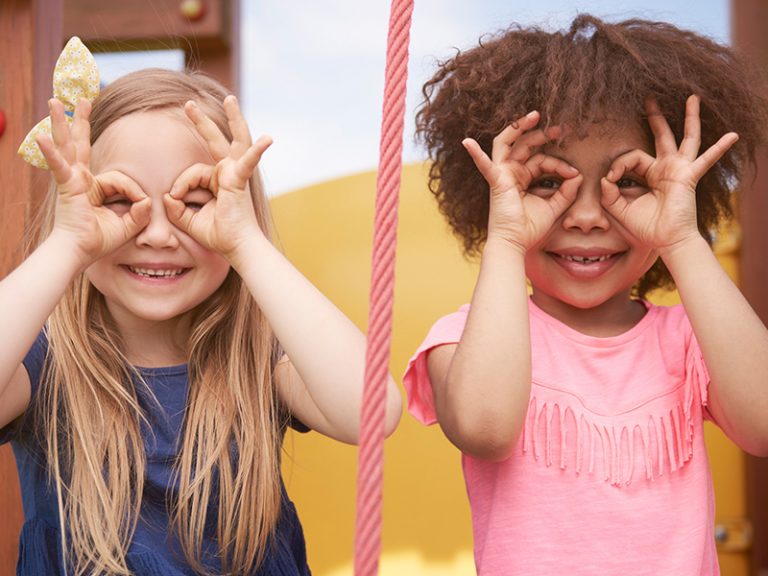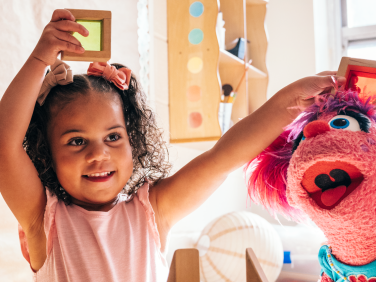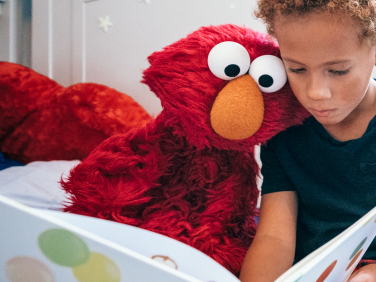
Language and Literacy
Language is a key part of early childhood education and helps lay the foundation for success in school.
Sesame Street friend Buzz Word Explains Why Language Is Important
By talking to—and listening to—kids, we help them learn how to make choices, solve problems, and express themselves.
Language and Literacy Subtopics
Explore further and help spark a love of language.
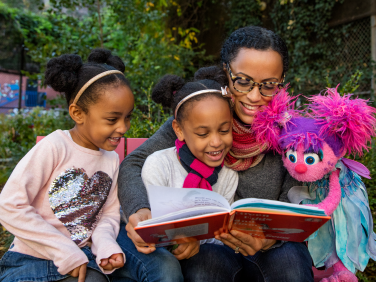
Reading
Reading together opens doors to new and exciting worlds. Helping children learn to read and nurturing a love of reading helps prepare them to succeed in school…and in life!
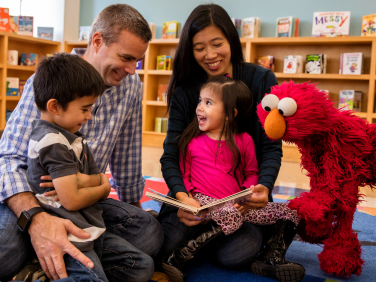
Vocabulary
Explore the many ways to expand and grow a child’s vocabulary.
Asking questions builds language skills and starts rich conversations. Use these resources to spark meaningful conversations in everyday moments.
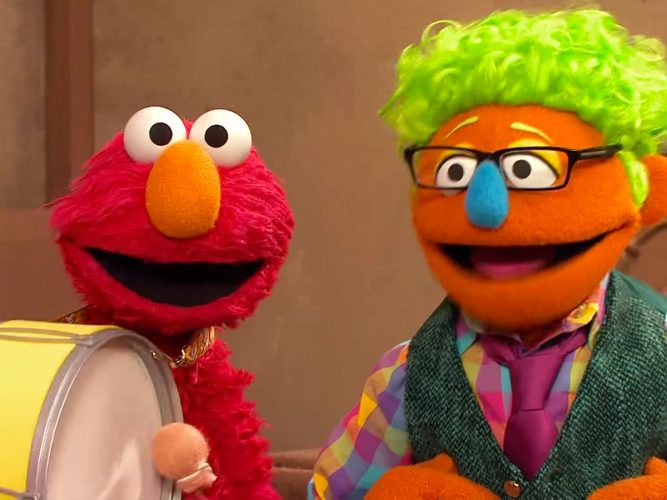
Ask Questions, Build Skills
Questions can inspire and help children imagine and wonder. Ask questions and learn how to add new words into your vocabulary with Abby, Elmo, and Buzz.
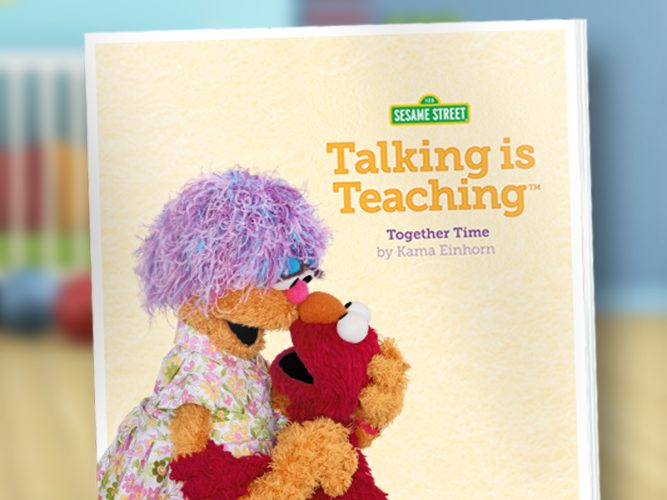
Talking is Teaching
Share this story with your baby or toddler to encourage language skills.

Language in Everyday Moments
Use these ideas to help children learn all day long.
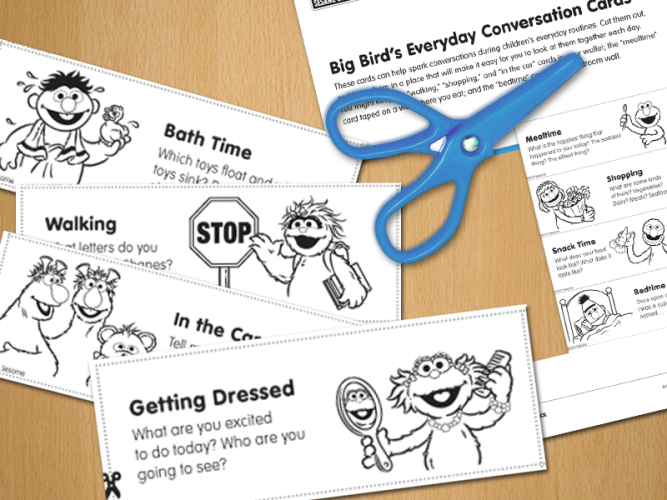
Everyday Conversation Cards
Use these cards as conversation starters during your everyday routines.
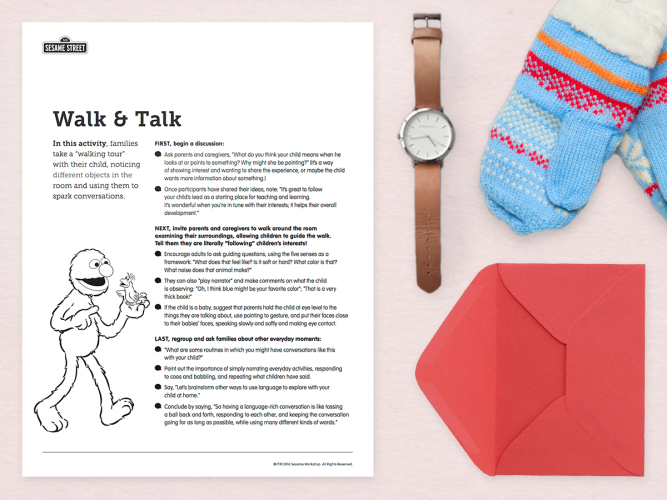
Walk & Talk
Spark conversations by pointing out new objects.
Estos materiales están disponibles en Español. Deles un vistazo.
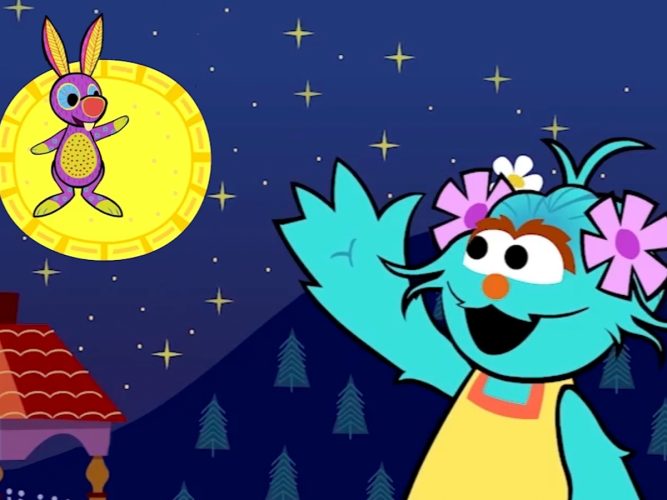
Inventemos un cuento
Leer cuentos desarrolla el vocabulario y las destrezas del pensamiento crítico. También es una forma de estrechar vínculos afectivos y compartir la cultura y las tradiciones familiares.

Tarjetas de convesaciones diarias
Use estas tarjetas para iniciar conversaciones durante las rutinas diarias.
Age Group
Language
Resource Type
Activity Length
Sort By
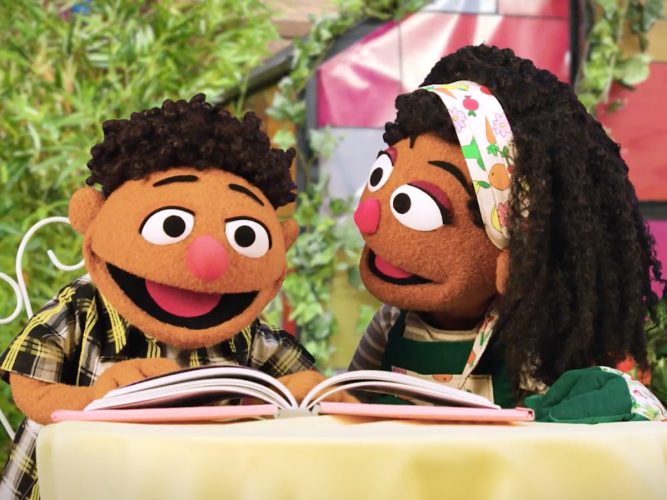
A Star Reader
There are many steps to reading, and all are important to becoming a great reader. It’s a process!
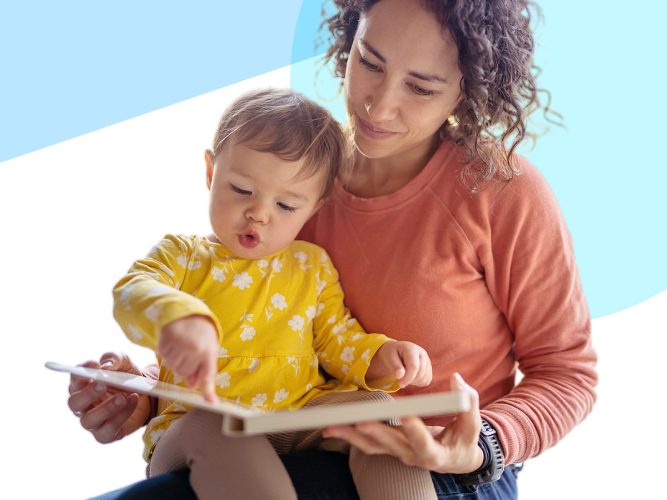
Tips for Shared Reading with Children Birth to Three
Tips for using reading time to bond with your child and build their language and literacy skills.
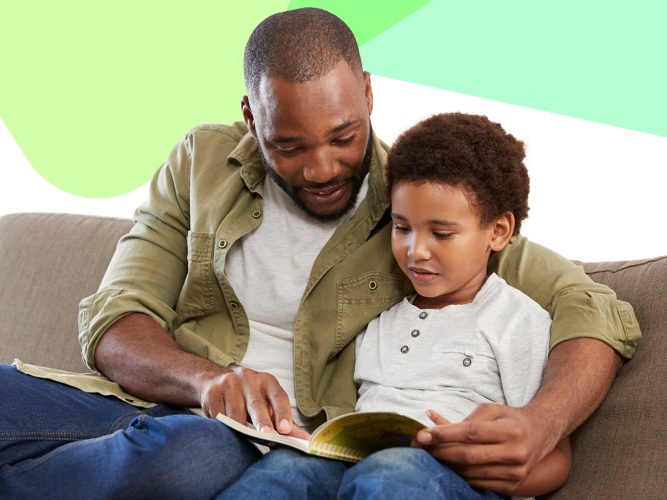
Tips for Shared Reading with Children Three to Five
Tips to make shared reading a time for learning and connection.
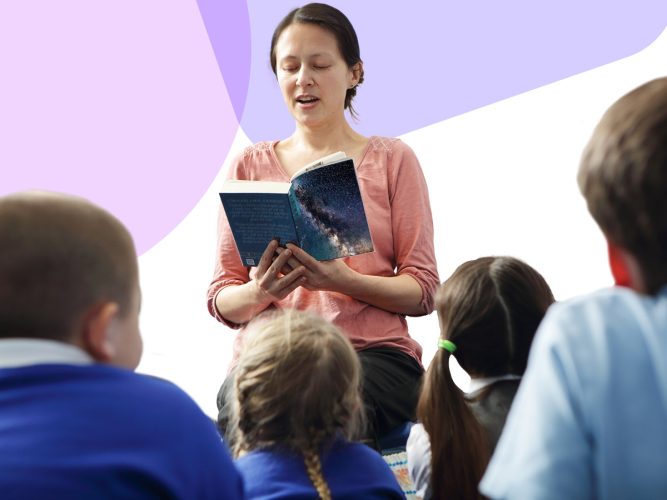
A Mighty Voice
Finding confidence in the ways that you tell stories will make them even more special to the children you share them with.

My Favorite Part
Help little ones share special parts of stories in words and pictures.
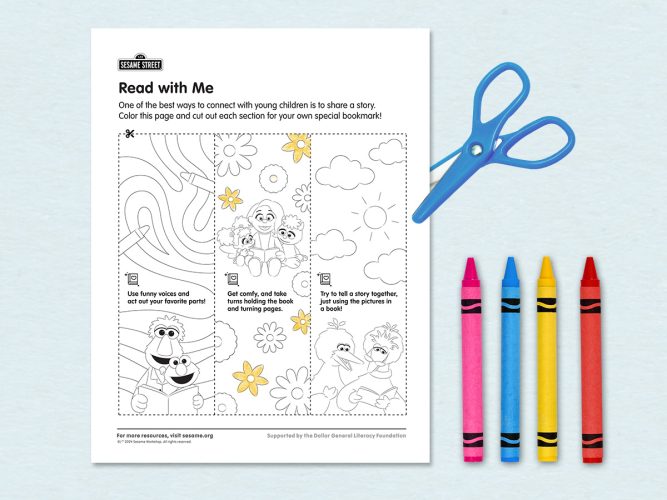
Read with Me
Track your reading progress with some printable bookmarks!
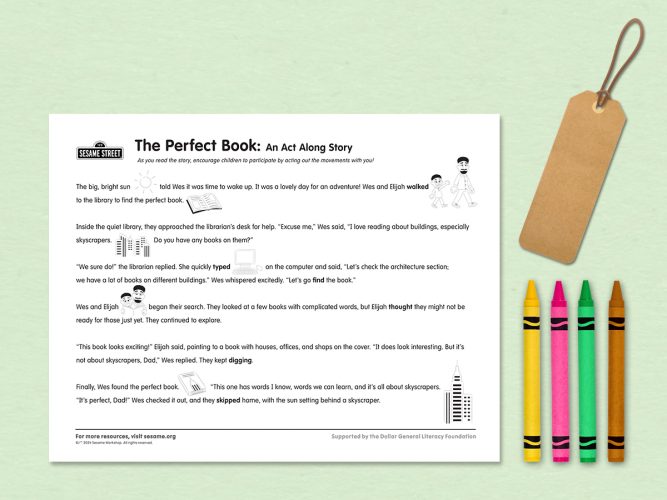
The Perfect Book: An Act Along Story
Make story time more engaging by encouraging children to act out what they hear!
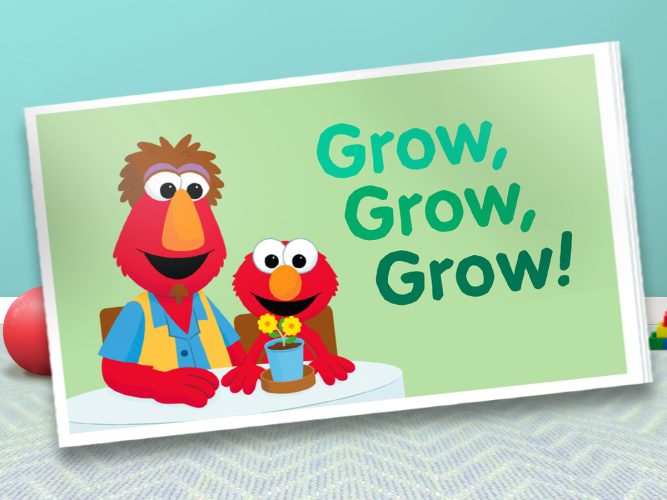
Grow, Grow, Grow!
A story about Elmo and his daddy using a book to grow a flower.
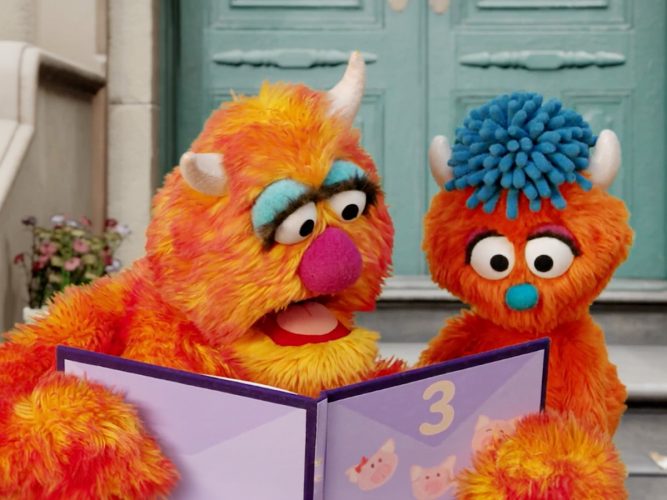
One More Time
There are lots of different ways to share the same story, again and again!
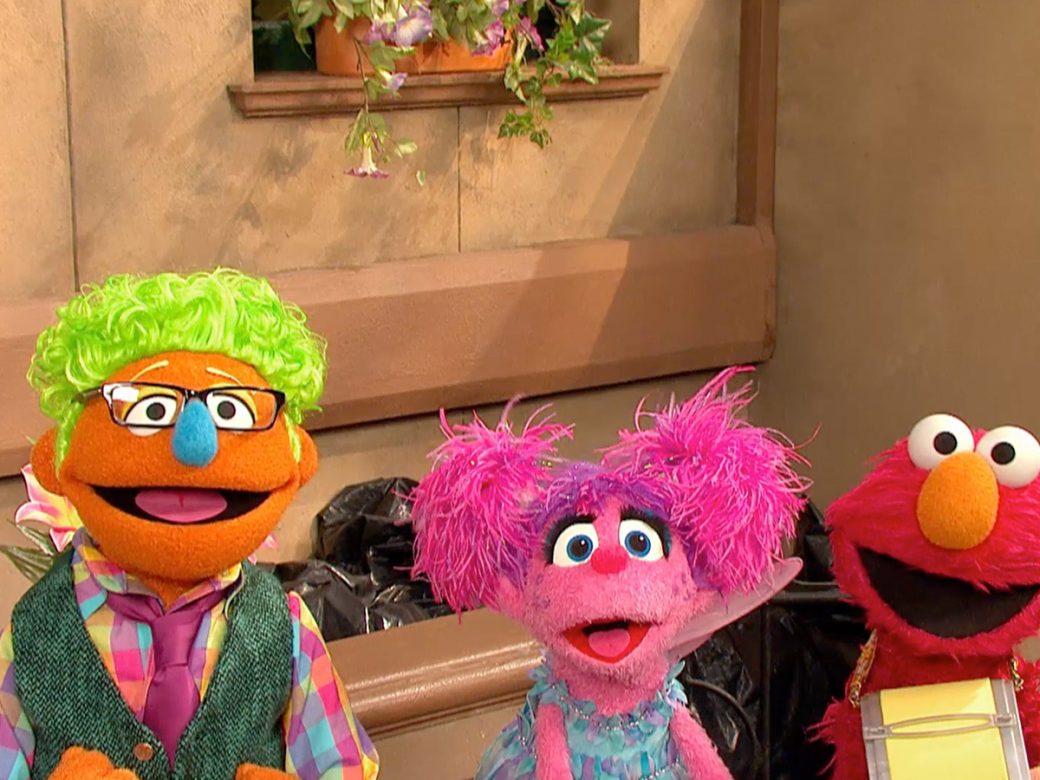
Parents, caregivers, and providers can keep the learning going! Find more topics and resources to help children build skills that lay the foundation for success in school and in life.

Childhood Milestones
So much brain development happens in the earliest years of life, and little ones thrive when they have lots of nurturing interactions with caring adults.

School Readiness
Simple ways to lay the foundation for learning.

Learning Through Play
Did you know there is a relationship between play and learning? Children love to play and, as they do, they’re exploring the world around them, building self-confidence, and practicing important skills crucial to brain development.
